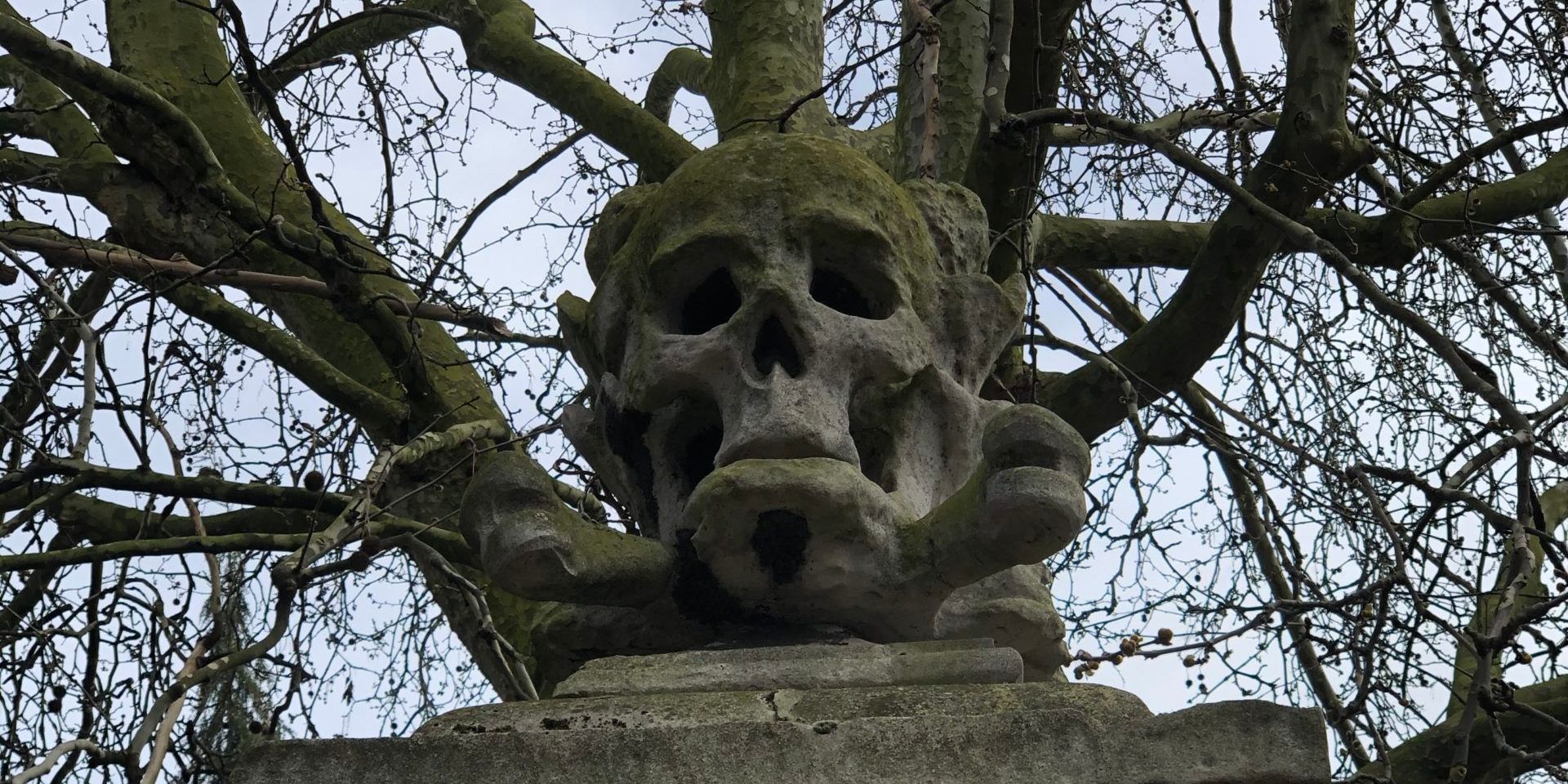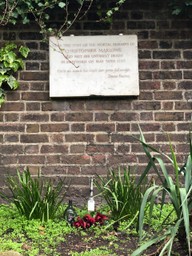
Marlowe’s Grave
Sir Christopher Marlowe, the playwright, was stabbed through the eyeball into the brain in a drunken row with a spy friend over the drinks bill in an illegal tavern. But stabbing in South London isn’t reserved to playwrights and spies, these days everyone’s at it.
Marlowe, who wrote Doctor Faustus amongst other masterpieces, is now buried in an unmarked grave somewhere in St Nicholas’s Church Deptford, near where the stabbing took place.
At the back of the churchyard a plaque commemorates Marlowe.
On any day fresh tributes to Marlowe can be found at his grave. On the day I took this photo there were flowers, candles, and a glass skull bong.
Why the glass skull bong I don’t know. Perhaps an implication Marlowe did a deal with the devil, like his character Faustus did. Or perhaps one of the local art students from Goldsmith’s Uni thought Marlowe might like to get stoned in hell?
Marlowe was around at the same time as Shakespeare, they actually shared a birthday.
While we commonly only celebrate Shakespeare, it turns out that the Bard was part of a movement of many great playwrights at the time.
Shakespeare later alluded to Marlowe’s death in As You Like It as “a great reckoning in a little room”.
There are a few conspiracy theories about Marlowe’s death.
Perhaps Marlowe himself was a spy for Queen Elizabeth against the Catholics, perhaps he was murdered for the blasphemy in his plays, or…
Perhaps Marlowe faked his own death, moved to France, and wrote plays under the pseudonym William Shakespeare.
That would explain why they had the same birthday.
But not their different writing styles.
Marlowe died in the tavern of the widow Mistress Elenor Bull. Whether is was an actual pub the “Bull Tavern” remains open to debate. It might have been just a back room in her house, or it might have been an illegal drinking den for spies. No record of the “Bull Tavern’s” address could be found, and the search for the Bull Tavern continues.
Renewed interest in the plays of Marlowe and contemporaries have been spurred on by:
- The Sam Wanamaker Playhouse – the baby sister theatre to Shakespeare’s Globe Theatre. A replica of the old Blackfriars Theatre – indoor, candlelit, and less rainy than the Globe
- Play readings and explanations of Marlowe’s plays by The Beyond Shakespeare company
The Churchyard surrounding St Nicholas’s is worth a wonder around. It has a mini maze labyrinth made of pebbles, and beautiful flowers in spring.
The reverend at St Nicholas’s church is known to very progressive. Performances, and local history events are sometimes held in the church itself (and I saw a new-fangled flatscreen TV in there once, so I guess they do screenings too.) The reverend is even in favour of ordination of women – what with being a woman herself. Deptford’s very own Vicar of Dibley.
Further reading
- More information about Marlowe can be found at St Nicholas’s Church website.
- You can explore Marlowe’s plays performed by The Beyond Shakespeare Company
UPDATE 11 January 2021: This Deptford graveyard features in the book [Ad] Lethal White by Robert Galbraith:
“A pair of gigantic, crumbling stone skulls sat on top of carved bones on gateposts… Finally she sat down on a wooden bench… and was suddenly transported, entirely against her will, back to the hotel suite in Yorkshire, almost a year ago, where a blood-red bouquet of roses had witnessed the aftermath of her abandonment of Matthew on the dance floor at her wedding reception…” – [Ad] Lethal White by Robert Galbraith, chapter 3, page 56.
* Photo at top of page: Skull and crossbones statue at the entrance to St Nicholas’s churchyard that inspired the pirate flag the ‘Jolly Roger’. Many pirates set off from nearby this Deptford graveyard.



